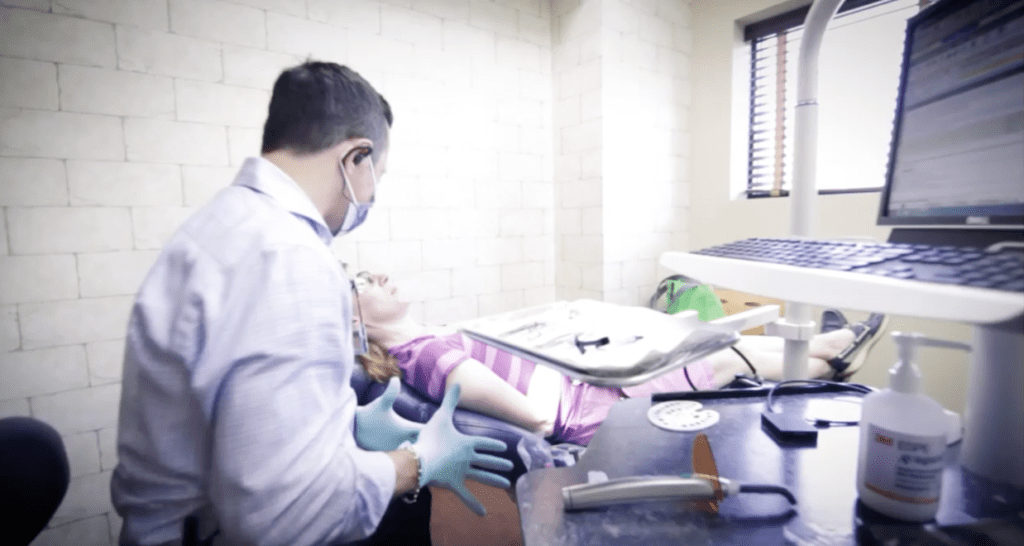
What Is Airway Orthodontics and How Can It Improve Your Child’s Health?
Posted on June 19, 2025
Parents often turn to orthodontics to fix crooked teeth or align a child’s bite—but there’s a growing area of orthodontic care that goes deeper than appearances. Airway orthodontics focuses on something even more essential: your child’s ability to breathe properly.
This emerging field of orthodontics is about identifying and correcting issues related to how the jaw and facial structure influence airflow. Why does that matter? Because poor airway development can impact your child’s sleep, growth, behavior, and overall health.
Understanding airway orthodontics can help parents recognize early signs of concern and seek proactive solutions that support their child’s long-term well-being.
What Is Airway Orthodontics?
Airway orthodontics is a specialized approach to orthodontic care that focuses on the structure and function of the airway—particularly how the growth of the jaws, face, and oral tissues can influence a person’s ability to breathe freely through their nose.
Rather than simply focusing on straightening teeth, this method evaluates:
- Nasal breathing patterns
- Tongue posture
- Jaw alignment and development
- Facial growth trajectories
- Sleep-disordered breathing symptoms
This broader focus allows orthodontists to intervene early and guide proper development—often before traditional braces would typically be considered.
How Poor Airway Development Affects Children
When the upper or lower jaw is underdeveloped, it can lead to a narrow palate or restricted airway. These structural issues may force a child to breathe through their mouth rather than their nose, especially at night. Over time, this can contribute to a range of physical and behavioral issues.
Potential consequences of poor airway development:
- Snoring or restless sleep
- Mouth breathing
- Daytime fatigue or irritability
- Difficulty focusing in school
- Behavioral symptoms similar to ADHD
- Poor facial development or asymmetry
- Frequent sinus infections or allergies
Because these symptoms are often misunderstood or attributed to other causes, they may go unaddressed until a child is older. Airway orthodontics can help correct the root cause earlier—often during the most critical years of facial and jaw development.
What Does Airway-Focused Treatment Involve?
Treatment begins with a comprehensive evaluation of your child’s facial structure, bite, tongue posture, and breathing habits. This assessment may include:
- 3D imaging or digital scans
- A review of sleep and behavior patterns
- Observation of how the lips, tongue, and jaw function together
If early signs of airway issues are found, your orthodontist may recommend:
- Palatal expanders to widen a narrow upper jaw and improve airflow
- Myofunctional therapy to retrain tongue and oral muscle habits
- Early orthodontics to guide jaw development and align teeth
- Habit correction appliances to address thumb-sucking or tongue thrust
In some cases, referrals to sleep specialists or ENT doctors may also be part of the care plan.
When Should Your Child Be Evaluated?
The ideal time for an airway-focused orthodontic evaluation is around age 7—when the permanent teeth are just beginning to come in and the jaw is still developing. At this age, an orthodontist can catch subtle issues that may not be obvious yet and recommend early intervention if needed.
Signs that your child may benefit from an airway evaluation:
- Chronic mouth breathing
- Snoring or loud breathing during sleep
- Grinding teeth at night
- Restless sleep or bedwetting
- Chronic nasal congestion
- Difficulty concentrating or hyperactivity
Early evaluation doesn’t always mean early treatment. Sometimes, it simply provides peace of mind—or the opportunity to monitor development over time.
Benefits of Addressing Airway Issues Early
By intervening early, airway orthodontics can help guide the jaw and face to grow in a more natural, healthy way. That means fewer complications later—and often, less need for invasive treatment down the line.
Benefits of airway-focused orthodontics include:
- Improved sleep quality and behavior
- Better concentration in school
- Fewer allergies and sinus infections
- Healthier facial and dental development
- Reduced risk of needing future surgeries
When a child can breathe properly, they can sleep more deeply, learn more effectively, and grow with fewer barriers to overall health.
Airway Orthodontics vs. Traditional Orthodontics
Traditional orthodontics typically begins in the early teen years and focuses on aligning the teeth and bite. Airway orthodontics, on the other hand, begins much earlier and aims to address the underlying causes of misalignment, especially those related to breathing or jaw growth.
Think of airway orthodontics as a preventative, whole-health approach to dental care. It’s not just about a straight smile—it’s about a well-functioning system that supports your child’s overall development.
Next Steps: What to Do If You’re Concerned
If you’ve noticed signs of mouth breathing, snoring, or jaw-related issues in your child, trust your instincts. While it may seem unrelated to dental care at first, these issues often have a structural root that can be addressed through orthodontics.
The earlier you seek an evaluation, the more options you’ll have for guiding healthy growth. Even if no immediate treatment is needed, you’ll gain a better understanding of your child’s development and be able to make more informed decisions moving forward.
Ready to Learn More About Your Child’s Airway Health?
If you’re in the Mayfield Heights, Twinsburg, or surrounding Cleveland area and want to learn more about airway orthodontics, our friendly team at Success Orthodontics is here to help. We offer thorough evaluations to determine whether early treatment could benefit your child’s breathing, sleep, and development.
Schedule your free evaluation today and take the first step toward a healthier, more confident future for your child.

